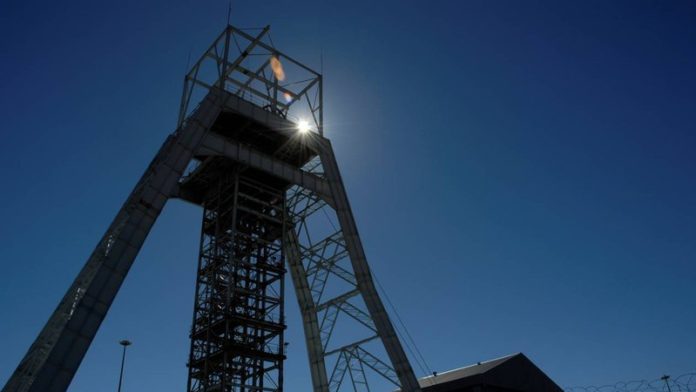
IN 2007, a company called the Pan African Minerals Development Company (PAMDC) was formed with the governments of South Africa, Zimbabwe and Zambia as equal one-third owners and the then director-general of South Africa’s Department of Mineral Resources (DMR) as chairman of the board.
Prior to its formation, “new order” prospecting rights applications for 1.7 million hectares of the Northern Cape and North West Province were prepared and submitted, in the name of a company called ZiZa, formerly the Bechuanaland Railway Company which housed long-standing historical mining interests of Zimbabwe and Zambia, to the DMR’s regional offices in both Kimberley and Mafikeng.
As anyone who has submitted a modern prospecting right application will know, it is a highly technical task that has to include the input of a variety of professionals, including a professional surveyor. The surveyor must prepare a precise description of the land area which is the subject of the application. This description would include a diagram and exact and correct coordinates for the land area in question.
Generally, the prospecting right areas are required to match the overlying surface properties. In any event the 1.7 million hectares would have consisted of hundreds of farms, and the description of the prospecting right land area would have had to mirror the formal surveyor-general’s description of all the farm and farm portions on the surface.
I don’t know who exactly prepared the prospecting right application on behalf of Ziza Limited, but I strongly suspect that it was done in close co-operation with officials of the DMR.
What I do know is that the prospecting right applications that were prepared were entirely deficient on at least one ground, as they did not correctly describe the land area that was the subject of the application. There was no way that the DMR administrative staff could enter the co-ordinates of the land area into the department’s Geographical Information System. There was a clearly a problem – the prospecting right applications had been made, the applications had significant political support, but they were so deficient they literally could not be used to describe what land was subject to the applications. The applications should have been rejected by the department, but obviously could not as the department was effectively a party to its own application. But at the same time that applications could not be rejected, it could also not be processed.
Sometime later a successful Australian exploration company, Aquila Resources, decided to undertake mineral exploration for iron ore and manganese in South Africa as part of its strategy to seek out resources to meet the then voracious demand for iron ore and related minerals from China. The “lose it or use it” principle in the new legislation was something that Australian mining entrepreneurs understood and South Africa’s government appeared, at least superficially, to want to attract explorers and mine developers.
Aquila did its homework and decided to apply to the Kimberley regional office for a Prospecting Right over 37,000 hectares of land that they thought might be prospective for either iron ore or manganese. The application was accepted and as it was fully compliant with the requirements of the MPRDA and the associated Mining Charter, it was duly granted.
The company’s exploration activities in the area, at a cost of R158m, discovered more than 100 million tonnes of manganese in the ground. The company subsequently succeeded in renewing the prospecting rights and continued investing significant amount of foreign money into exploration in South Africa – in full compliance with all legal requirements.
Then, in 2010, Aquila completed a full mining right application with a view to building a manganese mine in South Africa. However, to its consternation, the application appeared to be ignored by the DMR. After receiving no clear indications as to why this was the case, the company was eventually informed, verbally, that their application would not be approved because there had been a ‘double granting’ and the prospecting rights should never have been granted in the first place. Note that this is after having spent R158m and having successfully renewed the prospecting right at least once.
Naturally, the response by Aquila was to take legal advice and appeal the decision.
However, this proved extremely challenging, as the DMR would not issue a formal rejection of the application. As a result, the company had to first file numerous legal applications for access to information. Eventually, after spending significant amounts of money and time, Aquila was able to submit a comprehensive appeal to the department. Due to the very clear conflict of interests by the director-general of the DMR who is also chairman of PAMDC, this appeal had to go directly to the mines minister.
However, no ministerial decision was forthcoming. As it transpired, the original prospecting right application was made by Ziza Limited, but the prospecting right had somehow then been granted to PAMDC once the deficient land description had been corrected, which was not the holder of the “old order” mineral rights. This meant that there were now multiple parties involved in the debacle. To add to the complexity, Ziza Limited had by now been de-registered in England and Wales, which in terms of the MPRDA should have meant that ZiZa Limited had already lost all of their prospecting rights.
As it turned out, the delay by the minister was deliberate, Ziza Limited had to be “un-deregistered” so that the three governments could strengthen their case against Aquila.
A full six years later, and on the back of a mandamus application to the court (a writ written as a command instructing an inferior court) to force the minister to take a decision, Aquila got the appeal decision it had been waiting for. Unfortunately, contrary to the advice of both the minister’s internal and external legal advisers. He chose to deny the appeal by Aquila and upheld the rejection of its mining right application.
CONSTITUTIONAL COURT
Aquila took the obvious decision to have the minister’s decision reviewed in the High Court.
In a devastating judgement Judge Tuchten of the North Gauteng High Court ruled that the actions by PAMDC, Ziza Limited and the minister were aimed solely at obstructing Aquila. He went further to say that Aquila, through its actions, had revealed serious institutional incompetence within the DMR.
The judgement was appealed by the DMR, ZiZa Limited and PAMDC. The appeal was upheld by the Supreme Court of Appeal in 2017. Aquila then had no option but to appeal the Supreme Court’s decision to the Constitutional Court. On Friday, 15 February 2019, the Constitutional Court overturned the Supreme Court’s decision and re-instated the findings of the North Gauteng High Court, with costs awarded to Aquila. One of the many findings is that PAMDC’s original prospecting right, that has held 1.7 million hectares of highly prospective land dormant for 14 years, was unlawful.
While three governments have been obstructing an Australian company that both wanted to invest in South Africa and create jobs for South Africans, all but Aquila’s 37 000 hectares of the 1.7 million hectares of highly prospective land remains completely unexplored. This is both a massive failure to provide a world-class regulatory environment and to ensure that the country’s mineral resources are exploited to the benefit of all South Africans.
Therein lies the moral of this cautionary tale. South Africa has in place a mining Act that requires world-class regulation and administration of our nation’s mineral wealth – for the benefit of all its people. The story of Aquila versus PAMDC proves that this is clearly not the case. In fact, one of our country’s courts formally found that the DMR to be institutionally incompetent, a decision the Constitutional Court has confirmed.
Our constitution also requires transparency from our government. However, unlike 18 other African countries, where one can go online and get detailed information about who holds what prospecting rights and where, in South Africa, no such access to information exists.
The challenge, ultimately, is not necessarily a political one. The South African government is entitled to implement whatever policies are constitutionally compliant and agreed to by parliament. What it should not be permitted to do, however, is allow such massive levels of administrative incompetence – whether deliberate or otherwise – as to make such policies irrelevant.
With all this in mind, if we want a fully functional and effective mining industry in South Africa that provides opportunities for all, what is needed is a much more significant focus on mines that don’t, in fact, yet exist. Key to this that our mineral rights administration has to be dramatically improved and full access to transparent, comprehensive and accurate prospecting and mining rights and mining company information has to be freely provided. These should be non-negotiable pillars that must be in place to ensure any future for the South Africa mining industry.
Paul Miller is a fund manager with CCP 12J Fund. He was formerly MD of Keaton Energy and a resources banker for Nedbank Capital.











